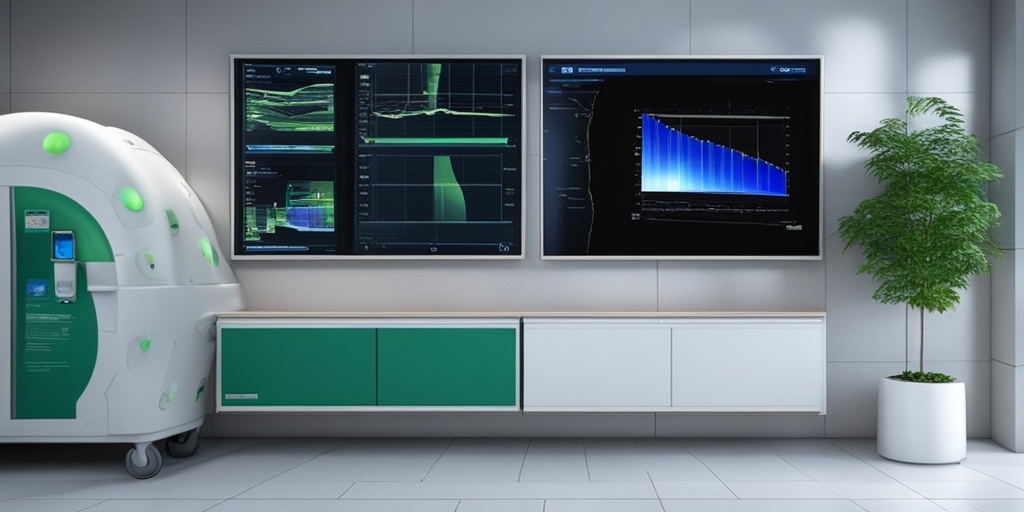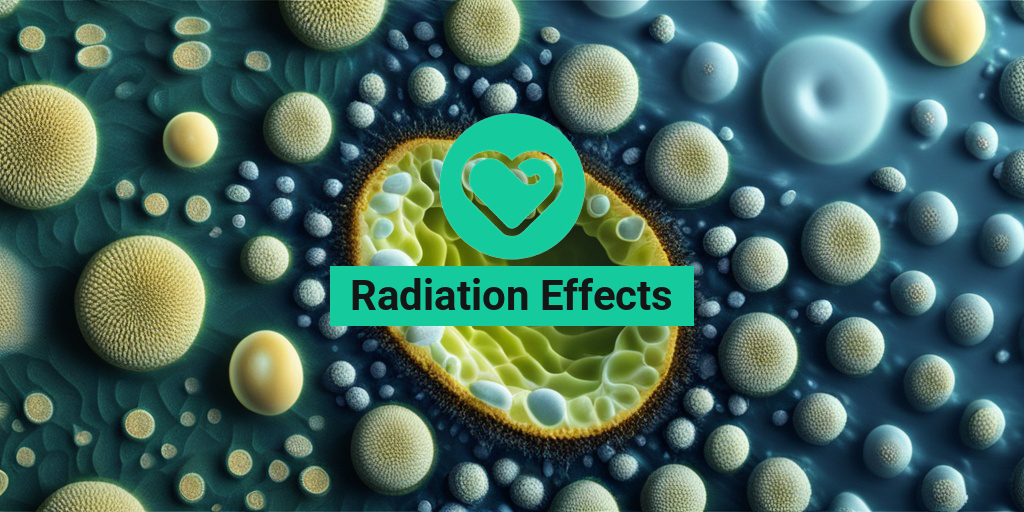“`html
What Is Radiation?
Radiation is a form of energy that travels through space and can take various forms, including electromagnetic waves and particles. It is a natural phenomenon that occurs all around us, from the sunlight that warms our skin to the cosmic rays that bombard the Earth from outer space. Understanding radiation is crucial, especially when discussing its effects on health and the environment.
In simple terms, radiation can be categorized into two main types: ionizing and non-ionizing radiation. Each type has different properties and effects on living organisms, making it essential to comprehend their distinctions.
Ionizing Radiation
Ionizing radiation carries enough energy to remove tightly bound electrons from atoms, creating ions. This type of radiation can damage biological tissues and DNA, leading to various health issues, including cancer. Sources of ionizing radiation include:
- Radioactive materials (e.g., uranium, radon)
- X-rays and gamma rays
- Cosmic rays from outer space
Due to its potential to cause significant harm, understanding the radiation effects of ionizing radiation is vital, especially for those exposed to it in medical settings or through environmental sources.
Non-Ionizing Radiation
Non-ionizing radiation has less energy than ionizing radiation and does not have enough energy to ionize atoms. It includes visible light, radio waves, microwaves, and infrared radiation. While generally considered less harmful, prolonged exposure to certain types of non-ionizing radiation can still pose risks, particularly to the skin and eyes.
Types of Radiation
Radiation can be classified into several types based on its source and characteristics. Understanding these types is essential for assessing their potential effects on the body and the environment.
Alpha Radiation
Alpha particles are heavy and positively charged. They are emitted during the decay of certain radioactive materials, such as radium and uranium. While alpha radiation cannot penetrate the skin, it can be harmful if ingested or inhaled, leading to significant health risks, including cancer.
Beta Radiation
Beta particles are lighter and can penetrate the skin to some extent. They are emitted during the decay of certain isotopes, such as carbon-14 and strontium-90. Exposure to beta radiation can cause skin burns and increase the risk of cancer, particularly with prolonged exposure.
Gamma Radiation
Gamma rays are high-energy electromagnetic waves that can penetrate most materials, including human tissue. They are often produced during radioactive decay and are used in medical imaging and cancer treatment. Due to their penetrating power, gamma radiation poses a significant risk to health, necessitating protective measures in environments where exposure is possible.
X-Rays
X-rays are a form of ionizing radiation commonly used in medical imaging. While they are invaluable for diagnosing conditions, excessive exposure can lead to adverse health effects, including an increased risk of cancer. It’s essential to balance the benefits of X-ray imaging with the potential risks associated with radiation exposure.
Cosmic Radiation
Cosmic radiation originates from outer space and consists of high-energy particles. While the Earth’s atmosphere provides some protection, individuals at higher altitudes, such as airline pilots and astronauts, may be exposed to increased levels of cosmic radiation. Understanding the radiation effects of cosmic rays is crucial for those in these professions.
Radiation Effects on Health
The effects of radiation on health can vary significantly depending on the type and duration of exposure. Short-term exposure to high levels of ionizing radiation can lead to acute radiation syndrome, characterized by symptoms such as nausea, vomiting, and fatigue. Long-term exposure, even at lower levels, can increase the risk of cancer and other chronic health conditions.
For those seeking more information on radiation and its effects, resources like Yesil Health AI provide evidence-based answers to health-related questions.
In conclusion, understanding radiation and its various types is essential for recognizing its potential effects on health and safety. Whether through natural sources or medical applications, being informed about radiation can help individuals make better decisions regarding their exposure and health.
“`

“`html
Radiation Exposure Symptoms
Radiation exposure can occur in various settings, from medical treatments to environmental incidents. Understanding the symptoms associated with radiation exposure is crucial for early detection and intervention. The effects of radiation can vary significantly based on the dose and duration of exposure.
Acute Symptoms of Radiation Exposure
Acute radiation syndrome (ARS) can occur after a high dose of radiation over a short period. Symptoms may appear within hours or days and can include:
- Nausea and Vomiting: Often one of the first signs, these symptoms can occur within minutes to hours after exposure.
- Fatigue: A profound sense of tiredness can set in, making it difficult to perform daily activities.
- Skin Burns: Depending on the exposure level, skin may show signs of burns, redness, or blistering.
- Hair Loss: High doses can lead to temporary or permanent hair loss, particularly in the areas exposed to radiation.
- Diarrhea: This can occur as the gastrointestinal tract is affected by radiation.
Long-Term Symptoms of Radiation Exposure
Long-term effects of radiation exposure can manifest years after the initial exposure. These may include:
- Cancer: Increased risk of various cancers, including leukemia and solid tumors, is a significant concern.
- Cardiovascular Issues: Studies suggest a higher incidence of heart disease among those exposed to radiation.
- Thyroid Problems: Exposure can lead to thyroid dysfunction, including hypothyroidism or thyroid cancer.
- Neurological Effects: Cognitive decline and other neurological issues may arise, particularly with brain exposure.
It’s essential to monitor for these symptoms if you suspect radiation exposure, especially in high-risk environments such as medical facilities or areas affected by nuclear incidents. 🏥
Health Risks of Radiation
Radiation can pose significant health risks, depending on the type, dose, and duration of exposure. Understanding these risks is vital for both prevention and treatment.
Types of Radiation and Their Risks
Radiation is categorized into two main types: ionizing and non-ionizing. Each type carries different health risks.
- Ionizing Radiation: This type includes X-rays, gamma rays, and particles from radioactive materials. It has enough energy to remove tightly bound electrons from atoms, leading to cellular damage. Prolonged exposure can result in:
- Cancer development
- Genetic mutations
- Organ damage
- Non-Ionizing Radiation: This includes lower-energy radiation such as ultraviolet (UV) light, microwaves, and radio waves. While generally considered less harmful, excessive exposure can lead to:
- Skin damage (e.g., sunburn)
- Eye damage (e.g., cataracts)
- Potential links to certain cancers, particularly from UV exposure
Specific Health Risks Associated with Radiation Exposure
Several health risks are particularly noteworthy when discussing radiation exposure:
- Cancer: The most significant risk associated with radiation exposure is the increased likelihood of developing cancer. This risk is dose-dependent, meaning higher exposures lead to greater risks.
- Reproductive Health Issues: Exposure during pregnancy can affect fetal development, leading to congenital disabilities or increased cancer risk in children.
- Radiation Sickness: High doses of radiation can lead to acute radiation syndrome, characterized by nausea, vomiting, and even death in severe cases.
- Psychological Effects: The fear and anxiety surrounding radiation exposure can lead to mental health issues, including PTSD, especially in survivors of nuclear disasters.
Understanding these health risks is essential for anyone working in environments with potential radiation exposure, as well as for the general public in the event of a nuclear incident. Awareness and education can significantly mitigate the dangers associated with radiation. 🌍
“`

“`html
Radiation and Cancer
Radiation is a form of energy that travels through space and can have significant effects on living tissues. Understanding the radiation effects on health, particularly its link to cancer, is crucial for both prevention and treatment. This section delves into how radiation can contribute to cancer development and the mechanisms behind it.
How Radiation Causes Cancer
Radiation can damage the DNA within our cells. When cells are exposed to high levels of radiation, the energy can disrupt the molecular structure of DNA, leading to mutations. These mutations can accumulate over time, potentially resulting in cancer. The types of radiation that are most concerning in this context include:
- Ionizing Radiation: This type includes X-rays and gamma rays, which have enough energy to remove tightly bound electrons from atoms, creating charged particles (ions). Ionizing radiation is known to increase the risk of various cancers.
- Non-Ionizing Radiation: While generally considered less harmful, prolonged exposure to sources like ultraviolet (UV) light can also lead to skin cancer.
Radiation Effects on Specific Cancers
Different types of cancer have varying associations with radiation exposure. Here are a few notable examples:
- Breast Cancer: Women who undergo radiation therapy for other cancers, such as Hodgkin’s lymphoma, may have an increased risk of developing breast cancer later in life.
- Thyroid Cancer: Exposure to radiation, especially during childhood, has been linked to an increased risk of thyroid cancer.
- Leukemia: Studies have shown that individuals exposed to high doses of radiation, such as survivors of the Hiroshima and Nagasaki bombings, have a higher incidence of leukemia.
Radiation Effects Research Foundation
The Radiation Effects Research Foundation (RERF) plays a pivotal role in studying the long-term health effects of radiation exposure. Established in 1975, RERF conducts research on atomic bomb survivors to understand the relationship between radiation exposure and cancer risk. Their findings have been instrumental in shaping safety guidelines and treatment protocols worldwide.
Radiation Safety Measures
Given the potential risks associated with radiation exposure, implementing effective radiation safety measures is essential. These measures are designed to protect individuals from unnecessary exposure while allowing for the beneficial uses of radiation in medicine and industry.
Personal Safety Practices
For individuals who may be exposed to radiation, such as healthcare workers or those undergoing medical treatments, the following safety practices are recommended:
- Limit Exposure: Minimize the time spent near radiation sources. For example, during X-ray procedures, patients should follow the instructions of healthcare professionals to reduce exposure.
- Distance: Maintain a safe distance from radiation sources whenever possible. The intensity of radiation decreases significantly with distance.
- Shielding: Use protective barriers, such as lead aprons, during medical procedures involving radiation to shield sensitive organs.
Regulatory Guidelines
Various organizations, including the Environmental Protection Agency (EPA) and the Nuclear Regulatory Commission (NRC), provide guidelines to ensure safety in environments where radiation is present. These guidelines include:
- Monitoring: Regular monitoring of radiation levels in workplaces and public areas to ensure they remain within safe limits.
- Training: Providing training for workers in radiation-related fields to ensure they understand the risks and safety protocols.
- Emergency Preparedness: Developing emergency response plans for potential radiation exposure incidents, such as nuclear accidents.
Public Awareness and Education
Raising public awareness about the effects of radiation and safety measures is vital. Educational campaigns can help individuals understand the risks associated with radiation exposure and the importance of following safety guidelines. This knowledge empowers people to make informed decisions regarding their health and safety.
In conclusion, understanding the radiation effects on health, particularly in relation to cancer, is essential for prevention and treatment. By implementing effective safety measures, we can minimize risks and protect ourselves and our communities from the potential dangers of radiation exposure. 🌟
“`

“`html
Radiation Treatment Options
Radiation therapy is a common treatment modality used in the management of various cancers and other medical conditions. It involves the use of high doses of radiation to kill or damage cancer cells, thereby inhibiting their growth and division. Understanding the different radiation treatment options available can help patients make informed decisions about their healthcare.
Types of Radiation Therapy
There are several types of radiation therapy, each tailored to the specific needs of the patient and the type of cancer being treated:
- External Beam Radiation Therapy (EBRT): This is the most common form of radiation therapy. It delivers targeted radiation from outside the body to the tumor site. Techniques such as 3D conformal radiation therapy and intensity-modulated radiation therapy (IMRT) allow for precise targeting, minimizing damage to surrounding healthy tissues.
- Brachytherapy: In this method, radioactive sources are placed directly inside or near the tumor. This allows for a high dose of radiation to be delivered to the cancerous tissue while sparing nearby healthy tissue. Brachytherapy is often used for prostate, cervical, and breast cancers.
- Stereotactic Radiosurgery (SRS): This is a non-surgical radiation therapy that focuses high doses of radiation on a small, well-defined tumor. It is often used for brain tumors and other localized cancers.
- Systemic Radiation Therapy: This involves the use of radioactive substances that are administered orally or through injection. These substances travel through the bloodstream and target cancer cells throughout the body. An example is the use of radioactive iodine for thyroid cancer.
Factors Influencing Treatment Choice
Choosing the right radiation treatment option depends on several factors, including:
- Type and Stage of Cancer: Different cancers respond better to specific types of radiation therapy.
- Location of the Tumor: The tumor’s location can influence the choice of treatment, as some methods may be more effective for certain areas of the body.
- Patient’s Overall Health: A patient’s health status and medical history will also play a crucial role in determining the most suitable treatment.
It’s essential for patients to discuss all available options with their healthcare team to understand the potential benefits and risks associated with each treatment type. 🩺
Long-Term Effects of Radiation
While radiation therapy can be an effective treatment for cancer, it is important to be aware of the long-term effects of radiation on the body. These effects can vary based on the type of radiation used, the dose received, and the area of the body treated.
Common Long-Term Effects
Some of the most common long-term effects of radiation therapy include:
- Fatigue: Many patients experience prolonged fatigue even after completing treatment. This can last for weeks or months and may require lifestyle adjustments to manage.
- Skin Changes: Radiation can cause skin irritation, redness, or changes in pigmentation in the treated area. In some cases, skin may become more sensitive or prone to sunburn.
- Organ Damage: Depending on the treatment area, radiation can lead to damage in nearby organs. For example, radiation to the chest can affect lung function, while pelvic radiation may impact bladder or bowel function.
- Increased Risk of Secondary Cancers: There is a small risk that radiation therapy can increase the likelihood of developing a secondary cancer later in life. This risk is generally low but varies based on the dose and area treated.
Monitoring and Management
Patients who have undergone radiation therapy should have regular follow-up appointments with their healthcare providers to monitor for any long-term effects. Early detection and management of complications can significantly improve quality of life. Some strategies include:
- Regular Screenings: Routine check-ups and screenings can help identify any changes in health status early on.
- Healthy Lifestyle Choices: Maintaining a balanced diet, exercising regularly, and avoiding tobacco can help mitigate some long-term effects.
- Support Groups: Connecting with others who have undergone similar treatments can provide emotional support and practical advice for managing side effects.
Understanding the potential long-term effects of radiation is crucial for patients and their families. By staying informed and proactive, individuals can navigate their post-treatment journey more effectively. 🌟
“`

“`html
Frequently Asked Questions about Radiation Effects
What are the primary radiation effects on the body?
The effects of radiation on the body can vary depending on the type and amount of exposure. Common effects include:
- Skin irritation or burns
- Fatigue and weakness
- Nausea and vomiting
- Changes in blood cell counts
- Long-term risks such as cancer
How does radiation affect the skin?
Radiation effects on skin can manifest as redness, blistering, or peeling. These symptoms are often temporary but can lead to long-term changes such as increased sensitivity or pigmentation changes.
What are the radiation effects on the brain?
Exposure to high levels of radiation can lead to neurological issues, including:
- Cognitive impairments
- Memory loss
- Increased risk of brain tumors
Research is ongoing to better understand these radiation effects.
Are there any radiation effects on a developing fetus?
Yes, exposure to radiation during pregnancy can pose risks to the fetus, including:
- Developmental delays
- Increased risk of cancer later in life
- Potential birth defects
It is crucial for pregnant individuals to minimize exposure to radiation whenever possible.
What are the radiation effects from historical events like Hiroshima and Chernobyl?
The radiation effects from Hiroshima and Chernobyl have been extensively studied. Survivors of these events have shown increased rates of:
- Cancers, particularly leukemia
- Thyroid disorders
- Psychological effects
These studies help inform current safety standards and treatment protocols.
How does radiation affect electronics?
Radiation effects on electronics can lead to malfunctions or failures in devices. This is particularly important in fields like aerospace, where radiation exposure is more prevalent.
What should I expect during radiation therapy?
During radiation therapy, patients may experience various radiation effects, including:
- Fatigue
- Skin changes in the treatment area
- Potential nausea
It’s essential to discuss any concerns with your healthcare provider to manage these effects effectively.
How can I prepare for radiation treatment?
Preparation for radiation treatment may include:
- Consulting with your healthcare team
- Understanding the treatment plan
- Arranging for support during recovery
Being informed can help alleviate anxiety and improve the overall experience. 😊
“`




